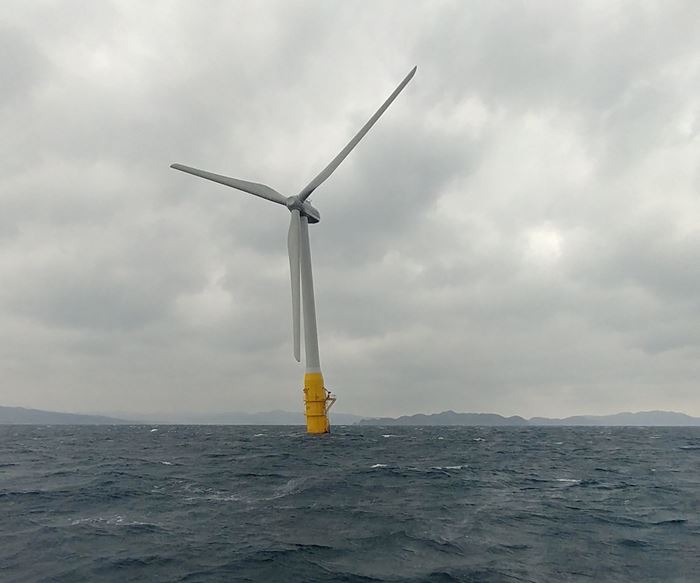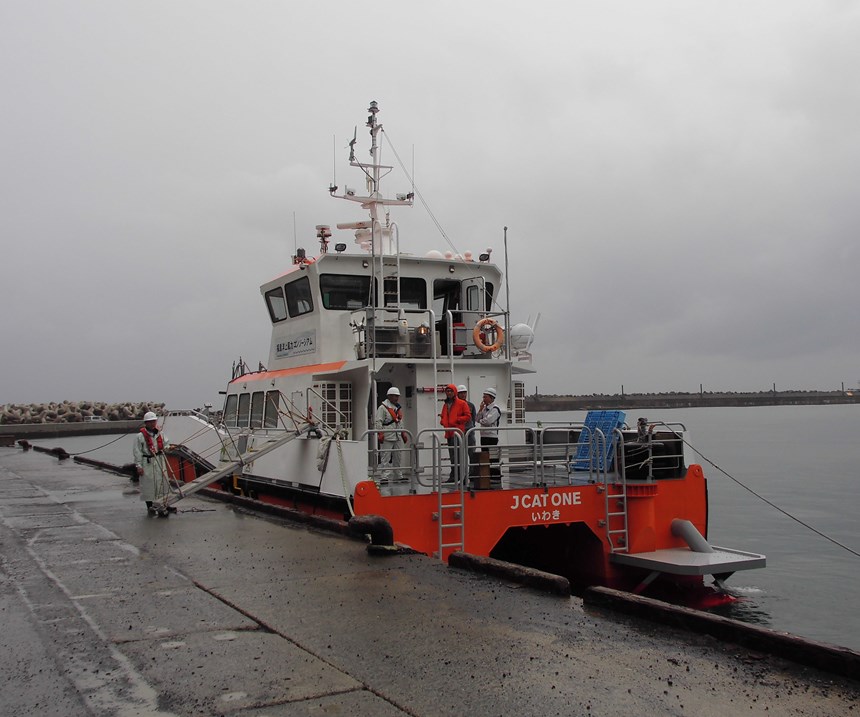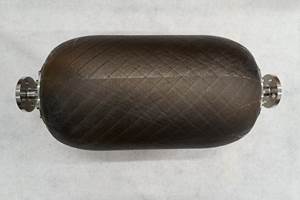Global offshore wind – the new frontier for composites
Offshore wind projects around the world provide new opportunities for composites suppliers.
Land-based wind power generation has been around for several decades, providing a strong and growing market for the composites industry. Turbine blades are the major application segment in the wind power market, with glass fiber being the largest material segment. In this context it is worthwhile to look at the globally growing offshore wind market as this sector offers even more opportunities for composites than onshore wind.
Let’s first look at some basic market facts. With land-based wind power generation costs at an all-time low, what makes the — by comparison — more expensive offshore wind so attractive? The answer varies by location. Europe’s established wind power markets such as Scandinavia, Germany, Spain and the UK have already used most of the best onshore wind resource areas. Therefore, offshore wind plays a major role for meeting the EU renewable energy target of 32% by 2030.
In Asia, Japan is leading the way with floating offshore wind demonstration projects, while Taiwan has awarded a total of 5.5 GW of offshore wind capacity to be developed by 2025, using existing bottom fixed foundation technology. South Korea plans 500 MW of offshore wind for the near term and a total capacity of 12 GW longer term. China now has 2.7 GW of installed offshore wind capacity, ranking it third globally after the UK and Germany. A large portion of China’s population, and its economic activity, are located along the coast and this means that offshore wind is a renewable energy source close to major load centers.
The same applies to the United States and is one major driver behind the more than 10-year push for offshore wind, especially by Northeastern states. Various studies in 2010, such as by AWS Truepower, show that offshore wind along the US East Coast has a strong diurnal coincidence with load compared to onshore wind as generation peaks in the late afternoon and early evening. In addition, the coincidence of offshore wind and load is better defined in the summer months when loads peak. This also explains the interest by U.S. grid operators in offshore wind. In December 2016, the first U.S. offshore wind project was commissioned when the 30-MW Block Island offshore wind farm, consisting of five Alstom Haliade 150-6-MW turbines, started sending power into the grid.
Beyond Block Island, there is a project pipeline of more than 14 GW planned along the U.S. East Coast, driven by Renewable Portfolio Standards (RPS) of the various states and, in some cases, offshore wind-specific requests for proposals (RFPs) in Massachusetts, Connecticut, Rhode Island and New York. Massachusetts recently awarded a Power Purchase Agreement (PPA) for 800 MW of offshore wind to Vineyard Wind at a PPA price starting at $84.23/MWh including RECs (Renewable Energy Credits). New York and Massachusetts have asked the US government to identify additional offshore wind lease areas in American federal waters and make them available for lease auctions. Unsolicited lease requests have also been filed for areas off California and Hawaii. Even though the rest of the world is now catching up to Europe’s offshore wind lead, European companies are key drivers behind the international offshore wind growth, both from a funding as well as supply chain perspective. In the US, 50% of the offshore wind areas are leased by European developers or their US subsidiaries; the situation is similar in Taiwan.
The offshore wind project lineup in Europe, and beyond, opens up new business opportunities for composite companies. Obviously, turbine blades are the biggest application segment for composites. For example, the blade for GE’s Haliade X 12-MW turbine is anticipated to be 107m/351 ft long. Assuming that a typical offshore wind farm comprises 50-100 turbines, then we are looking at 150-300 blades per farm. The existing US offshore wind project pipeline alone requires the equivalent of 4,200 blades or more if turbines of 10 MW or larger are used for all projects.
In addition to turbine blades, the offshore wind sector has demand for other components, such as fiber and synthetic mooring systems as well as support vessels and boats. The 14-GW-plus offshore wind project pipeline in the US creates a sizable demand for crew transfer vessels (CTVs) and other support ships as European vessels cannot be deployed in the US without complicated waivers. European engineering and design firms, as well as manufacturers, have started to look for US partners to build their designs, or are willing to develop a US version of proven European offshore wind support vessel designs. US boatbuilders, including manufacturers of high-end yachts, should consider this market as a real opportunity.
The ultimate frontier for offshore wind is opened up by floating offshore wind turbines. Northern New England, the entire US West Coast, large parts of Hawaii, Japan, the Mediterranean, areas off Portugal, Spain, Scotland and Norway, to name a few, require offshore wind turbines to be mounted on floating substructures because water depths exceed 80-100m. Bottom fixed foundations are simply not feasible in these areas. Floating wind has moved beyond niche status and initial pilot and demonstration projects in Norway, Portugal, Scotland and Japan.
Floating offshore wind substructures are defined by their type of stabilization. A buoyancy stabilized floating wind turbine platform consists of a barge base with catenary mooring lines. Examples of this include Principle Power’s semisubmersible substructure, Ideol’s floater and Japanese semisubmersibles from Mitsui and Mitsubishi, deployed off the Fukushima coast. Statoil’s Hywind floating wind turbine uses a ballast-stabilized spar buoy with catenary mooring and drag-embedded anchors. The third type is the tension leg platform (TLP), well known from the oil and gas industry. The platform is stabilized by the forces from tensioned mooring lines and buoyancy in the platform.
What all three technologies have in common is the need for mooring systems: the other major opportunity for composite and advanced material suppliers. The most common approach is to use large chains for mooring these types of substructures. However, there is currently only a handful of companies worldwide that can manufacture such large chains. Floating substructure technology providers have therefore identified the availability of mooring chains as a major supply chain bottleneck. As a result, some of the next demonstrator units will experiment with synthetic fiber mooring lines, in addition to chains, to compare and verify the impact from tension, corrosion, snap loads and wear.
Developers and suppliers of synthetic fiber lines, and comparable technologies, have a long-term market opportunity if they engage with floating wind technology developers now. While it will be another 5-7 years until we see a large-scale floating wind farm of 50-plus turbines, the technology is likely to go mainstream. Floating substructures offer better economies of scale as only one substructure design is required for a wind farm project; wind farms that use bottom fixed foundations require multiple foundation designs to accommodate the seafloor variations within a project zone. These variations are handled by adjusting the mooring line lengths of floating wind turbines.
Innovation and creativity is the core of the composite industry – offshore wind provides a new market opportunity that once again proves that point.
Related Content
NCC reaches milestone in composite cryogenic hydrogen program
The National Composites Centre is testing composite cryogenic storage tank demonstrators with increasing complexity, to support U.K. transition to the hydrogen economy.
Read MoreAchieving composites innovation through collaboration
Stephen Heinz, vice president of R&I for Syensqo delivered an inspirational keynote at SAMPE 2024, highlighting the significant role of composite materials in emerging technologies and encouraging broader collaboration within the manufacturing community.
Read MoreComposites end markets: Energy (2024)
Composites are used widely in oil/gas, wind and other renewable energy applications. Despite market challenges, growth potential and innovation for composites continue.
Read MoreJEC World 2023 highlights: Recyclable resins, renewable energy solutions, award-winning automotive
CW technical editor Hannah Mason recaps some of the technology on display at JEC World, including natural, bio-based or recyclable materials solutions, innovative automotive and renewable energy components and more.
Read MoreRead Next
Developing bonded composite repair for ships, offshore units
Bureau Veritas and industry partners issue guidelines and pave the way for certification via StrengthBond Offshore project.
Read MoreAll-recycled, needle-punched nonwoven CFRP slashes carbon footprint of Formula 2 seat
Dallara and Tenowo collaborate to produce a race-ready Formula 2 seat using recycled carbon fiber, reducing CO2 emissions by 97.5% compared to virgin materials.
Read MorePlant tour: Daher Shap’in TechCenter and composites production plant, Saint-Aignan-de-Grandlieu, France
Co-located R&D and production advance OOA thermosets, thermoplastics, welding, recycling and digital technologies for faster processing and certification of lighter, more sustainable composites.
Read More























